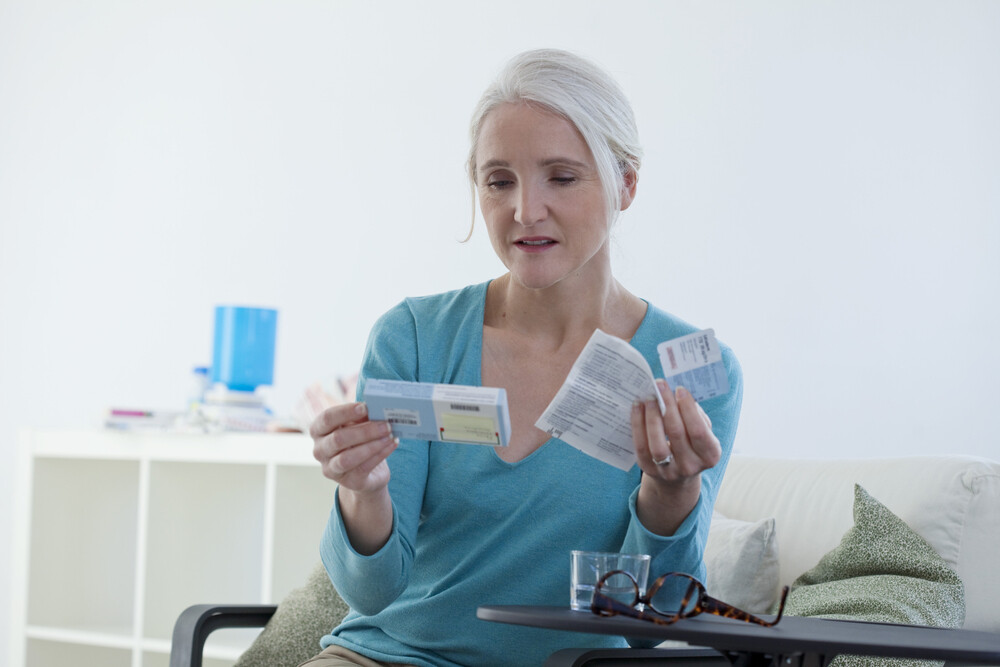When the menopausal symptoms become too severe, often only one thing helps: hormone replacement therapy. What this is and what risks it involves are explained below.
What is hormone replacement therapy?
About one third of all women suffer from severe climacteric symptoms during menopause (climacteric), such as hot flushes, sweating, sleep disorders, depression and urinary tract infections. To counteract these menopausal symptoms, women can benefit from alternative methods such as hormone yoga, Qigong or Tai Chi or – as recommended by the Cancer Information Service – from herbal medicines.
When can hormone replacement therapy be considered?
If the symptoms are too severe, women may consider a tailored Hormone Replacement Therapy (HRT), which should be discussed with the gynaecologist. In this form of therapy, the body is given back the hormones that it can no longer produce itself. The principle is as follows: As few hormones as possible, but as many as necessary. The preparations are available in gel, suppository, syringe, plaster, cream and tablet form and in different dosages.
In the context of hormone treatment, a distinction is made between monotherapy and combination therapy. Mono-therapies are only carried out with oestrogen, combitherapies with a combination of oestrogens and progestin (progesterone). As a rule, women with menopausal symptoms are prescribed therapy with both hormones, as oestrogen alone would stimulate the growth of the uterine lining too much. Monotherapies in which only oestrogens are administered are usually used in women whose uterus has been surgically removed.
Where does the bad image come from?
From 2002, when a US long-term study on hormone replacement therapy (HRT) was discontinued because the participants were more likely to develop breast cancer, thromboses and strokes. “The number of prescriptions then dropped by almost 80 percent at times,” says Dr. Christian Albring, President of the German Federal Association of Gynaecologists.
But doubts about the examination grew. “The participating women were per se at higher risk of breast cancer or heart attack,” says Albring. In addition, their average age at the beginning was 63 years – quite late for a HRT. The study can therefore hardly be transferred to younger, healthy women. In 2016, even two of the leading scientists of that time complained that their work had led to hundreds of thousands of women unnecessarily struggling with menopausal symptoms.
Does the treatment method increase the risk of breast cancer?
Hardly any other treatment method has been so hotly debated in recent decades as hormone replacement therapy. For its advocates, the treatment is a blessing for the women concerned, who thanks to treatment with sex hormones have hardly any complaints. Opponents fear that the treatment significantly increases the risk of breast cancer or vascular disease.
The “Women’s Health Initiative” study (WHI for short) from 2002 had shown that taking hormones did not, as expected, protect against disease, but on the contrary increased the risk of heart attack, stroke, thrombosis and breast cancer.
However, the authors of the study put these statements into perspective again, as stated in a press release from 2016, which was published jointly by the German Society for Gynaecology and Obstetrics, the Professional Association of Gynaecologists and the German Menopause Society. Their WHI study had been misinterpreted. According to the study, hormone therapy helps more than it can harm.
Healthy women need not fear an increased risk of breast cancer or stroke. On the contrary: on average, they suffer less frequently from osteoporosis and diabetes. Women who only took oestrogen preparations were even less likely to get breast cancer.
How did these contradictory statements come about?
Quite simply: the study group at that time cannot be compared with the European target group, emphasised Christian Albring, President of the Professional Association of Gynaecologists. The average age of the women examined was 63 years. In Germany, women are usually prescribed hormone replacement products as early as 45 or 50 years of age. In addition, about one third of the participants had diseases such as severe overweight and high blood pressure.
In addition, the study involved a combined, high-dose hormone preparation from gestagens and oestrogens, which is only rarely prescribed in Germany. All these factors considerably weaken the results of the study.
Is the intake of hormone preparations therefore safe?
There’s no general answer to that question. The experts agree that the long-term use of hormones for women in the menopause cannot be the patent solution. The doctor has to decide whether hormone replacement therapy is advisable and for how long. If the women’s level of suffering is particularly high, limited hormone replacement therapy is certainly advisable.
However, if you decide to undergo hormone treatment, it should not be started 15 or 20 years after the onset of menopause (in the postmenopause), but right at the beginning of the menopause. Otherwise, taking them could actually have a negative effect on your health.
When are the replacement useful?
If sleep, mood or other areas of life are suffering because the body’s own hormone production is drying up, the pharmaceutically produced substitute can bring huge relief. If the hormones are supplemented individually, at an early stage, in the smallest possible dose and, if possible, by gel or patch over the skin, their benefits for health and quality of life outweigh the risks.
However, the following still applies: Extra hormones are potent active ingredients. Women with cardiovascular diseases, breast cancer in the family or previous embolisms, for example, should continue to take no hormones at all or only very specific doses.
What alternatives are there?
For mild symptoms, herbal remedies are worth trying: e.g. extracts from grape silver candle, soya or red clover. Siberian rhubarb (e.g. in FemiLoges) can also help. This activates an oestrogen receptor, but not the one responsible for hormone-dependent tumour growth in the breast. “Osteoporosis can be prevented by a calcium-rich diet and exercise,” adds gynaecologist Christian Albring. Regular exercise helps not least against sleep disorders and the mood swings.

